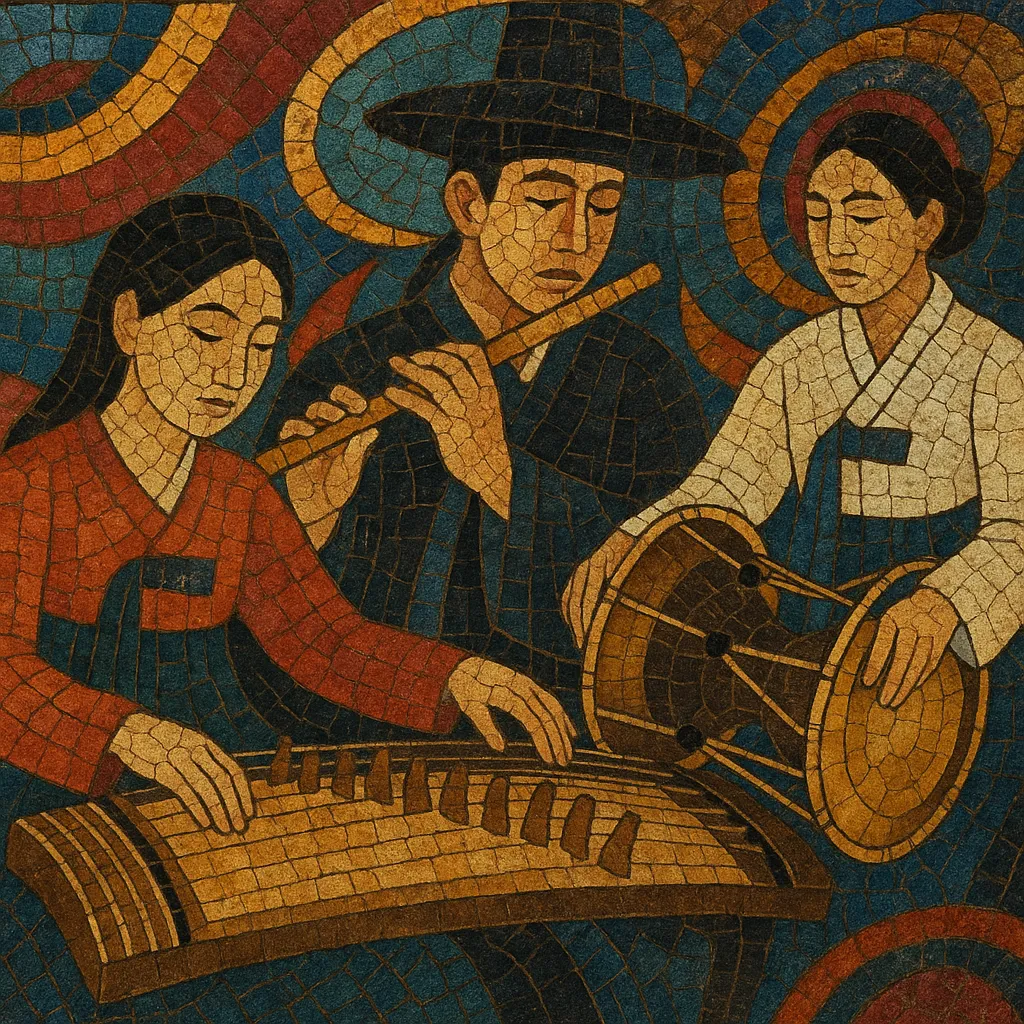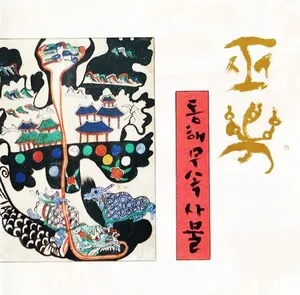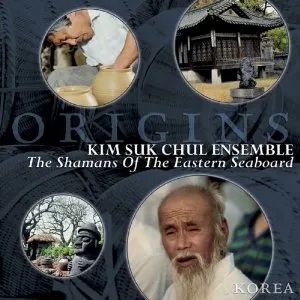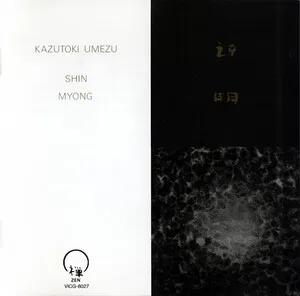
Korean music (gugak) encompasses the traditional, courtly, religious, and folk music of the Korean Peninsula, as well as the modern popular styles that emerged in the 20th and 21st centuries.
Traditional Korean music is built on modal systems such as pyeongjo and gyemyeonjo, cyclical rhythms called jangdan (e.g., jinyangjo, jungmori, jajinmori), heterophonic textures, and expressive ornamentation known as sigimsae. Core instruments include the gayageum (zither), geomungo (plucked zither), daegeum (bamboo flute), haegeum (two-string fiddle), piri (oboe), and percussion like janggu and buk.
Modern Korean music ranges from trot and ballad to globalized K-pop, K-rap, and K-rock, blending indigenous aesthetics with Western harmony, electronic production, and tightly choreographed performance.
Korean music traces to early statehood and ritual life, solidifying during the Three Kingdoms and Unified Silla eras. With sustained cultural exchange with China, Confucian ritual music (aak) derived from Chinese yayue was adopted, while native court music (hyangak/jeongak) and Buddhist chant flourished. Court and aristocratic repertoires favored refined modal systems, slow-breath phrasing, and elegant ensemble balance.
Outside the court, folk genres emphasized communal participation and improvisation. Pansori developed as a virtuosic epic song tradition; sanjo showcased instrumental improvisation over cyclical jangdan; sinawi featured shamanic-influenced ensemble improvisation. Percussion-driven farmers’ band music (pungmul) and various regional songs (minsogak) reinforced local identity.
Under Japanese rule, Western instruments and popular song structures entered Korea, giving rise to trot, an early pop style with distinctive rhythms and sentimental themes. After the Korean War, American military bases catalyzed band culture, jazz, and rock influences. State broadcasting and recording industries began formalizing popular markets while traditional arts were preserved via cultural heritage policies.
Seo Taiji and Boys fused hip hop, dance, and rock, revolutionizing youth music and media aesthetics. Entertainment companies systematized training, songwriting camps, and choreography, producing idol groups with polished audiovisual branding. Parallel scenes expanded: indie/rock in Hongdae, R&B and ballad on television charts, and renewed interest in crossovers with gugak.
K-pop became a global export through social media platforms, international collaborations, and world tours. Korean hip hop, R&B, and electronic sub-scenes matured, while contemporary gugak artists blended traditional instruments with jazz, ambient, and pop. Today, Korean music denotes both a deep heritage of court/folk arts and a dynamic ecosystem of globally influential popular genres.







